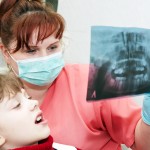
Lidocaine is the most widely used amide local anaesthetic having been clinically available since 1948 making it a ‘benchmark’ for new local anaesthetics. Articaine, introduced in 1976is considered to be a relatively safe local anaesthetic owing to its rapid metabolism into an inactive metabolite is considered suitable for use in children over the age of four.
The aim of this review was to compare the effects and adverse reactions between articaine and lidocaine in paediatric dental procedures.
Methods
A protocol was published in the PROSPERO database. Searches were conducted in the Cochrane Library, PubMed, Chinese Biomedical Literature Database (CBM), Embase, Web of Science and China National Knowledge Infrastructure (CNKI) databases. Randomised clinical trials (RCTs) comparing the use of articaine and lidocaine in paediatric patients (age <14 years) who were in good health and required dental treatments under anaesthesia were considered. Two reviewers independently extracted data and assessed risk of bias using the Cochrane tool (RoB2). The primary outcome was the adverse event rate. The certainty of the evidence was assessed using the Grading of Recommendations Assessment, Development and Evaluation (GRADE) approach.
Results
- 8 RCTs (5 parallel, 3 cross-over) involving 470 patients receiving articaine and 441 lidocaine.
- Patients ages ranged from 3 – 13yrs.
- 2 studies were considered to be at low risk of bias, 3 at high risk and 3 at unclear risk.
- Adverse events included, postoperative soft tissue injury (accidental lip/cheek injury), postoperative analgesic/medication use, nausea, dizziness, abnormal heart rate, oedema, headache, post-procedural pain (including injection site pain), tooth tenderness and aching jaw.
- Meta-analysis (8 studies) showed no significant difference in adverse events between lidocaine and articaine, risk ratio (RR) = 1.08 (95%CI:0.54 to 2.15).
- Sub-group analysis for pain, soft tissue injury and oedema also found no statistically significant differences between lidocaine and articaine (see table below).
| Postoperative | No. of studies (patients) | Risk Ratio (95%CI) |
| Pain | 5 (589) | 1.62 (0.84 to 3.12) |
| Soft tissue injury | 6 (789) | 0.93 (0.32 to 2.70) |
| Oedema | 2 (245) | 1.03 (0.15 to 6.96) |
- The GRADE certainty of evidence was assessed as ‘moderate’.
Conclusions
The authors concluded: –
In summary, both articaine and lidocaine seem safe for paediatric treatments. Articaine can be a good choice for routine dental treatment in paediatric dentistry. The use of articaine by IANB is inconclusive due to the lack of evidence-based medical evidence, so its main advantage is in local infiltration anaesthesia.
Comments
A protocol for the review was published in the PROSPERO database and a wide range of databases searched. Data abstraction and risk of bias assessment was conducted by two reviewers independently, but it is not clear whether study selection was. Of the 8 included studies only 2 were at low risk of bias. The included studies are small to moderate in size with a crude adverse event rate of 10.2 % for articaine and 9.5% for lidocaine. While the manufacturers recommend that articaine should not be used in children younger than 4 years two of the included studies did include children younger than 4. The findings suggest that articaine is as safe as lidocaine for paediatric patients. A previous review of articaine safety (Dental Elf – 27th Aug 2021) also supported the safety of articaine. That review included 12 RCTs none of which are included in the current review which focuses on children.
Links
Primary Paper
Li L, Sun DL. Adverse effects of articaine versus lidocaine in paediatric dentistry: a meta-analysis. J Clin Pediatr Dent. 2023 Nov;47(6):21-29. doi: 10.22514/jocpd.2023.078. Epub 2023 Nov 3. PMID: 37997231.
Other references
Dental Elf – 27th Aug 2021
